I shall continue to take the greatest pride in being your Queen, now and in the years to come.
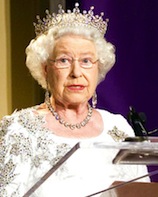
—Her Majesty The Queen, Toronto, 5th June 2010
As the representative of the Queen in Canada, I am deeply honoured, on behalf of all Canadians, to congratulate Her Majesty on her Diamond Jubilee-60 years of dedicated service to the people of all Commonwealth nations... Six decades ago, a young Queen began her reign, one focused on duty and service to others. It is my hope that we will use this milestone as an opportunity to strengthen the ties we have with each other and with the Crown, which helps to define our country and what it means to be Canadian"
—The Rt Hon David Johnston, Governor General of Canada, February 6, 2012
It is my privilege to serve you as Queen of Canada to the best of my ability, to play my part in the Canadian identity, to uphold Canadian traditions and heritage, to recognize Canadian excellence and achievement and to seek to give a sense of continuity in these exciting, ever-changing times in which we are fortunate enough to live.
—Queen Elizabeth II, Vancouver, 7th October 2002,
during her Golden Jubilee Homecoming
A central reality of Canadian life is the inevitably overwhelming influence of our friendly neighbour, the United States of America. Free Trade. Continental defence and secure borders in a post-9/11 environment. A porous frontier ranging from television and the Internet to popular music and culture. These and other factors often tend to overwhelm Canada’s national identity. Every nation needs to understand and foster the existence of distinct images and institutions; thus for Canada, constitutional monarchy is of particular importance. It makes Canada unique in the Hemisphere. Its focus of loyalty and allegiance to a respected monarch, and so to our system of governance, rather than to a politician, an ideology, a symbol or a single document, underlies the notably tolerant, mature society which is a source of pride for all Canadians.
[The Queen] symbolizes for many the merits of a constitutional monarchy in which the head of the nation[…] is separate and apart from the ongoing political struggles of the day.
—Bill Blaikie, MP, (NDP) 6th February 2002
the House of Commons, Golden Jubilee Accession Day
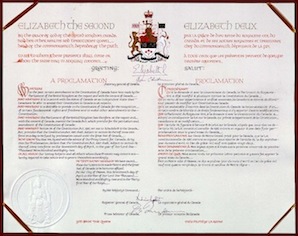 In a democracy, day-to-day decisions are made by those whom we have elected. Not surprisingly, this partisan political process reflects the things that divide Canadians. It encourages striving for partisan goals and personal success. This sort of debate is both inevitable and healthy in a vigorous democracy.
In a democracy, day-to-day decisions are made by those whom we have elected. Not surprisingly, this partisan political process reflects the things that divide Canadians. It encourages striving for partisan goals and personal success. This sort of debate is both inevitable and healthy in a vigorous democracy.
However, Canada’s constitution separates politics from service, and transient popularity from institutional stability. So the Prime Minister is our head of government and leader of a political party. As such, his actions are often controversial.
The Sovereign, however, is a force of unity, who as head of state embodies all Canada and all Canadians. The monarchy protects and exemplifies the things Canadians agree about, and remain constant, regardless of an election: community, tolerance, nationhood, the rule of law. And by presiding at events such as the Montréal Olympics and Canada Day celebrations on Parliament Hill, The Queen emphasizes the non-partisan, unifying nature of great national occasions.
Our ceremony today brings together Sovereign, Parliament and people — the three parts of Constitutional monarchy. That is a system in which those who represent the community come together and remain together, rather than dwelling on differences which might further divide them.
—Queen Elizabeth II, 1990, Ottawa
Parliament and the provincial legislatures are composed of The Queen and elected members — along with the Senate in the case of the federal government. However, no bills, no formal government regulations (Orders-in-Council
) or no spending is authorized without the agreement of The Queen or one of her representatives.

In a similar way, Parliament is summoned and dissolved in The Queen’s name. Also in her name, public officials and diplomats are appointed, treaties approved, and cabinets commissioned and dismissed. Normally, this is a formality. Canadians entrust the nuts and bolts of governing to those whom they have elected, as is appropriate in a democracy.
However, the Crown’s role (the Royal Prerogative
) remains part of our constitution to ensure that the rules of the game
are always followed, and to provide a non-partisan, non-violent safeguard — a constitutional fire extinguisher
as Alberta political scientist Frank MacKinnon has put it — should normal democratic processes ever break down or be threatened. For example, even a popular government cannot simply dispense with holding an election.
Provinces agree that the system of democratic parliamentary government requires an ultimate authority to ensure its responsible nature and to safeguard against abuses of power. That ultimate power must not be an instrument of the federal Cabinet.
—Statement by the ten provincial premiers,
9th-10th August 1978 at the
19th Annual Premiers’ Conference in Regina
Canada is a federal state. In short, this means that our Constitution gives law-making power in certain areas to the national government, such as the Criminal Code and foreign affairs. Other powers, such as education and municipal affairs, it assigns to the provinces.
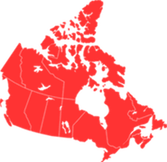 Each level of government exercises this authority on behalf of its citizens in the name of The Queen. So in this way it is possible to see the existence of 11 Crowns in Canada — the national Crown and the 10 provincial Crowns — each usually referred to in legal terms such as
Each level of government exercises this authority on behalf of its citizens in the name of The Queen. So in this way it is possible to see the existence of 11 Crowns in Canada — the national Crown and the 10 provincial Crowns — each usually referred to in legal terms such as The Queen in right of Canada
or The Queen in right of Manitoba.
The premiers, including the separatist René Levesque, underlined the importance of the Crown in their 1978 statement, above, since the monarchy gives authority to each law-making entity, making them of equal legal significance. It also guarantees that the rule of law will be followed in dealing with any of the many disputes that arise between Ottawa and the provinces.
These facts explain the strong support by the provinces for the institution of monarchy, which reconciles regional identity with national unity.
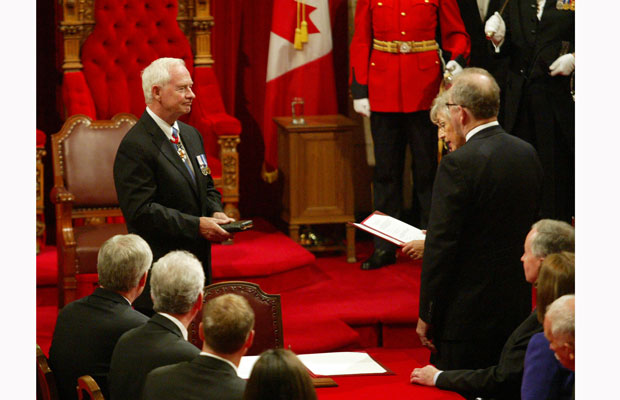
Her Majesty remains at the head of the State, the living symbol of the roots and continuity of the values we hold in common and those that are our permanent ideals …. She is the one entrusted with the conscience of the nation ….
—Fr Jacques Monet, sj, author, historian and former cultural
advisor at Rideau Hall, Autumn 2002, writing in
Canadian Monarchist News
Oaths taken by our new fellow Canadians, by MP’s and members of provincial legislatures, by judges, by members of the Canadian Forces and by many other public officials, are all oaths to The Queen.
By making this promise to the Sovereign rather than to a politician, those who serve us and live in the land show their ultimate loyalty is not to elected figures, but to all Canadians and to the laws that make up the fabric of our civilized society. In this way, process — following the rule of law — triumphs over partisanship — acting to promote the well-being of a narrow segment of society.
… Our ability to love inclines most naturally to persons, and in the person of The Queen we can invest all those many fractured loves that make up patriotic love: love of country, love of nation, love of culture, love of land, all combined and channelled through one person, one family ….
—Andrew Coyne, Southam Press columnist, 10th April 2002
The deepest loyalties of women and men are to their fellow human beings. Government carried on in the name of The Queen reflects Canada’s emphasis on the importance of the person, and of the dignity and equality of each individual who is either born here or who becomes part of our national family. In the same way, the moment new citizens take the Oath of Citizenship they become full and equal members of the Canadian family. Each Canadian gives allegiance to The Queen, so reciprocating her decades of service to all Canada.
We’re able to have the best of both worlds. We have the stability and the tradition of the monarchical system, but we also have a Canadian representative in the Governor General, who represents Canada as it is, as a Canadian, and does an incredible job representing the monarch, but also all Canadians.
—Hon. David Collenette, Minister of Transport, 18th May 2001
Canadians are fortunate to have as our monarch an instantly recognizable world figure. The Queen and members of the Royal Family make frequent homecomings to Canada. In their absence, the Governor General (for the national government) and the Lieutenant Governors (one for each provincial government) represent The Queen and perform most of the constitutional functions of the Sovereign in her name. This arrangement allows our country to share in the traditions of an ancient monarchy stemming out of Canada’s history, while at the same time we enjoy the services of distinguished fellow citizens — think of Major-General Georges Vanier, Lincoln Alexander, David Lam and Lynda Haverstock, to name but a few — who serve Crown and country with great distinction.
Every country is different, and we grew up in this one with the Royal Family as part of our heritage.
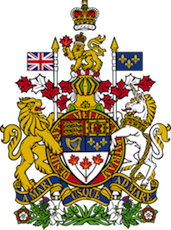
—Wayne Gretzky, hockey great,7th October 2002,
GM Place, Vancouver
Today’s monarchy stems from our history. Many of Canada’s First Nations chose tribal chieftains whose role was much like that of the local kings and queens of ancient Europe, Africa, South America and Asia. European explorers and the subsequent settlement by our French and British founding peoples brought to Canada their own experience of monarchy, symbolized by the Fleur de Lys and the Royal Union Flag. Many subsequent immigrants — be they from Russia or Japan, from Italy or Thailand — also knew the monarchical system of government.
In 1867, the Fathers of Confederation unanimously chose constitutional monarchy as Canada’s form of government. In 1982, Canada’s new Constitution reaffirmed and entrenched the Crown so that only unanimous federal-provincial agreement could ever alter it. So it is no surprise that in 2002, throngs hailed The Queen as she crossed Canada from Iqaluit to Fredericton, from Victoria to Toronto, in celebration of the 50th year of her service to this nation, as did unprecedented crowds during Canada Day celebrations on Parliament Hill during her 24th homecoming in 2010.
I want the Crown to be seen as a symbol of national sovereignty belonging to all. It is not only a link between Commonwealth nations, but between Canadian citizens of every national origin and ancestry[….] I want the Crown in Canada to represent everything that is best and most admired in the Canadian ideal. I will continue to make it so during my lifetime. I hope you will all continue to give me your help in this task.
—Queen Elizabeth II, June 1973, Toronto
Not only Queen of Canada, Elizabeth II is also Head of The Commonwealth of Nations. This 54-state international body is unique, as it functions not as a military alliance nor a trade bloc, but as a free association among countries of the former British Empire, who now cooperate in a variety of educational, development and social justice initiatives throughout the world. The diversity of these nations’ populations — from New Guinea to Belize, from New Zealand to India — mirrors the rich diversity of today’s Canada. In 2010, our Queen flew from Toronto to New York, were she addressed the General Assembly of the United Nations on behalf of all 16 countries of which she is the head of state. The night before, The Queen proudly told an Official Dinner in Toronto that I shall be travelling from this Northern Realm as Queen of Canada.
Fifty years after her accession to the Throne, Elizabeth II remains a symbol of continuity, stability and tradition in a world that is under a barrage of constant change … a Sovereign, faithful and loyal to our people …. The Queen and the heritage she gives to us is not just part of our past, but part of our common future …. When you’re a mature country, you don’t need to break your ties with the past.
—Hon. Sheila Copps, Minister of Canadian Heritage,
19th-20th February 2002, at the launching of federal
Golden Jubilee Initiatives, Ottawa
Canadians have lived for over 150 years in a tranquil, prosperous society. Unlike most countries, change has been incremental, and not achieved by violence. Much of the credit for this achievement is due to the women and men who have worked together to create a modern, progressive nation, respected around the world.
However, no country can achieve greatness without stable governance. Constitutional monarchy — the Canadian way — continues to provide that stability. This is confirmed each year in the United Nations’ Human Development Index, which regularly ranks Canada in the top five countries in the world.
As I reflect on Her Majesty's recently completed Diamond Jubilee celebrations, I must add that as Prince George is called to a life of service, he could look to no greater model than his great-grandmother. Her Majesty has devoted her entire life and energies to the service of the many nations of which she is the constitutional monarch. Over the past 60 years, she has stood with Canada through key moments of coutnry's history and as our nation went through change and transformation has been a rock of stability and a steadfast keeper of tradition
—l'hon Stephane Dion, MP (Lib: Saint Laurent-Cartierville) October 27, 2013, addressing the House of Commons in debate approving Humble Address to the Queen on the birth of a direct heir to the Canadian Throne.
Change is inevitable, and much of it good: cell phones, computers, social media. But in this dizzying march to progress, constant change leaves many uncertain or confused. In the same way, political leaders come and go—Kim Campbell and John Turner served as Prime Minister for but a few months. Canadians have voted in 20 federal elections during The Queen’s reign! It is a good thing that the Crown provides constancy amidst so much change. The Sovereign has the experience of decades, without the taint of a personal agenda. Such continuity constitutes an important anchor in our society.
In a world often focused on self-indulgence, onmydesires andmypriorities andmyagenda, The Queen’s focus on theweand theusand on tolerance and getting along with each other, and on the needs and interests of others, has served as antidote, example and inspiration.
—HRH Prince Michael of Kent, 15th March 2002,
addressing Golden Jubilee Banquet of the
Monarchist League of Canada, Toronto
In their constant round of travels, The Queen, members of the Royal Family and her Canadian representatives bring enormous encouragement to the communities and volunteer sectors that constitute so vital a part of our national existence. They inspire many to volunteer service. They create and award non-political honours to outstanding fellow citizens.
These Royal and vice-regal activities do not often feature on national news programs. Opening a new library, visiting a Legion Hall, speaking to a school civics class or lunching with a local service club are not on the media’s radar. But they constitute the basis of our civil society, and bring significant pride and assistance to Canada’s communities.
reBut for all those who don’t want the Queen there are easily as many who don’t want a president and even more who certainly would not want one if they knew who it would be. As you can readily see, I have given more thought to this subject than most and I have reached my own conclusion. God save The Queen.
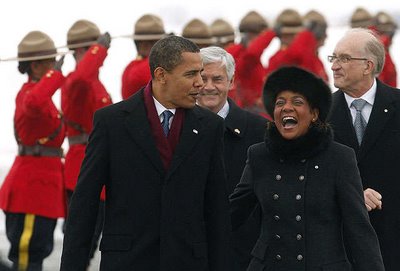
—Dalton Camp, political columnist, 23rd August 1994
No one has yet proposed an alternative system of government for Canada which would in the same way reflect our nation’s history and be superior to constitutional monarchy in terms of the day-to-day functioning of the Canadian state.
Canadians remember the wrenching constitutional debates that consumed enormous political energy from the mid-1960s through the early 1990s. Chiefly of interest to politicians, these arguments did nothing to effect solutions to the real concerns of our citizens such as crowded classrooms, access to health care, security in an era of terrorism, support for single-parent and low-income families.
A presidential system would make Canada more closely resemble the United States. It would combine the role of head of state with head of government. As our American friends discovered during impeachment processes in the Nixon and Clinton administrations, this proves an unhappy combination. Alternatively, the election of a president or governor general would simply create another politician, offer another level of personal ambition, necessitate another set of elections and make the holder of that office beholden to the interests of the different factions and groups to which the election was owed.